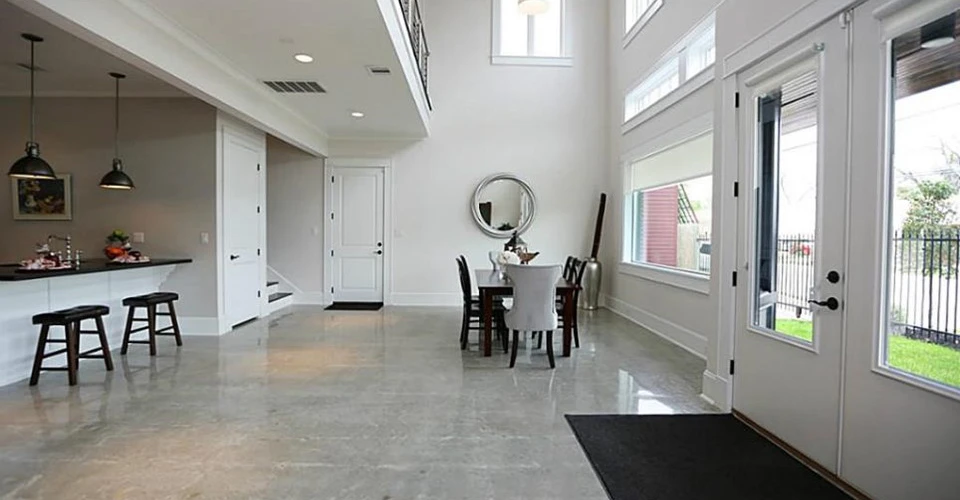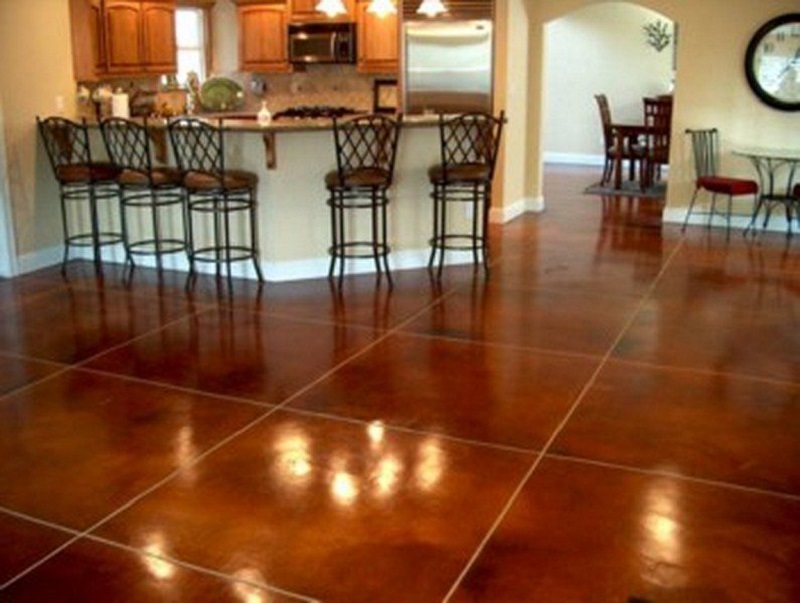Why Local Tarnished Flooring Is the Perfect Option for Sustainable Home Renovation
In the realm of lasting home renovation, local tarnished flooring has emerged as a prominent selection amongst environmentally conscious homeowners. As an affordable financial investment with reduced maintenance demands, it increases a provocative question: could this be the suitable solution for sustainable housing?
Recognizing the Concept of Regional Stained Floor Covering
While the notion might seem unique to some, regional stained floor covering is an innovative approach to home renovation that combines aesthetic appeals, toughness, and sustainability. The term describes making use of in your area sourced timber that is tarnished to accomplish a distinctive aesthetic charm. The staining procedure not just enhances the all-natural beauty of the timber grain but likewise includes a layer of defense, increasing the longevity of the floor covering. This method is taken into consideration lasting as it reduces the demand for transport of basic materials from far-off places, thus reducing carbon footprints. Furthermore, using regional wood types commonly supports local economic situations and advertises liable woodland administration practices. This principle, for that reason, provides homeowners an ecologically responsible selection without endangering visual charm or toughness.
The Visual Appeal of Regional Discolored Floor Covering
Why is neighborhood stained flooring getting appeal for its looks? Local discolored flooring uses a varied range of patterns and shades, mirroring the all-natural charm and variants of the local wood types utilized. Ultimately, the appeal of neighborhood discolored flooring exists in its capacity to change homes right into unique, aesthetically appealing areas while promoting sustainability.
Environmental Impacts of Local Stained Flooring
The ecological ramifications of regional stained floor covering encompass two substantial variables: lowering carbon footprint and waste minimization benefits. Using locally sourced materials for tarnishing not just decreases transportation emissions, however also promotes lasting forestry practices. Furthermore, the waste reduction aspect enters into play as these flooring kinds commonly have a longer lifespan, minimizing the frequent demand for substitutes and the waste related to it.
Minimizing Carbon Impact
As property owners turn to even more lasting choices, local tarnished flooring emerges as a viable option to minimize carbon footprint. The procedure of tarnishing the flooring, rather than utilizing artificial finishings, entails fewer chemicals and less energy-intensive procedures. Choosing for regional tarnished flooring demonstrates an efficient measure in promoting environmental sustainability, highlighting a concrete means property owners can contribute to combating climate modification from the comfort of their own homes. Local Stained Concrete.
Waste Minimization Advantages
Although commonly ignored, waste reduction is another considerable benefit of neighborhood discolored flooring. By picking this choice, house owners help in reducing the mass of waste headed to garbage dumps. This floor covering kind, generally sourced from local wood, can be restored, refinished, and reused, contributing to its longevity. Unlike artificial floor covering, it does not add to the growth of non-biodegradable waste. Furthermore, the discoloration procedure uses less sources and produces much less waste contrasted to manufacturing new flooring products. Furthermore, any type of waste generated during the staining process is biodegradable and typically organic, mitigating environmental harm. The option of neighborhood tarnished floor covering not just enhances homes however likewise underpins a commitment to sustainable living and waste reduction.
The Resilience and Upkeep of Regional Tainted Floor Covering

The Cost-Effectiveness of Local Stained Flooring
While local discolored flooring may initially seem much more expensive than various other options such as carpet or laminate, its long life and longevity quickly turn it right into a cost-effective choice. For property owners looking for a sustainable, economical remedy for their floor covering requires, local stained floor covering arises as a remarkable, long-term financial investment that pays off click reference over time.

The Real World Examples of Lasting Homes With Regional Stained Flooring
In the realm of sustainable home renovation, local stained floor covering has actually become a popular choice. To further illustrate its advantages, several the real world instances of eco-friendly homes that have effectively integrated this flooring strategy will certainly be highlighted. These study offer concrete proof of the advantages and impact of making use of regional tarnished flooring in sustainable homes.

Showcase: Eco-Friendly Flooring Residences
Scanning the world, one can discover various homes that embody the idea of eco-friendly living through the use of local discolored floor covering. In the heart of Denmark, a minimal home prides itself on its oak-stained floors, sourced and treated within the regional area. Throughout oceans in copyright, a modern residence showcases its abundant, maple-stained flooring, a testimony to the abundant regional wood supply. Down under in Australia, a beach house radiates with its eucalyptus-stained floors, mirroring the nation's native vegetation. These homes not only showcase the aesthetic versatility of regional tarnished floor covering yet also its contribution to an extra lasting lifestyle. Each flooring tells a tale of respect for the setting, showing that design and sustainability can certainly exist together.
Neighborhood Stained Flooring Advantages
The undeniable appeal of neighborhood tarnished flooring expands beyond its aesthetic appeal, as it likewise supplies significant advantages to both house owners and the setting. This sort of flooring is sourced and generated in your area, reducing transportation discharges and boosting the local economic climate. The discoloration procedure uses all-natural, safe materials, advertising interior air top quality and minimizing the home's environmental impact. In a sustainable home in Portland, Oregon, as an example, local tarnished concrete floorings not just boost the appearances yet additionally webpage act as thermal mass, soaking up warmth throughout the day and releasing it during the night, reducing energy use. An additional instance is a green-certified home in Austin, Texas, where in your area sourced walnut was discolored and utilized for flooring, adding to the home's LEED certification.
Verdict
In verdict, neighborhood discolored flooring is a viable and lasting option for home enhancement. With its special blend of ecological, aesthetic and economical advantages, regional stained floor covering is a clear selection for home owners seeking a lasting, visually appealing and cost-efficient home renovation remedy.
In the world of lasting home enhancement, local discolored floor covering has actually emerged my website as a popular option among environmentally mindful home owners. Local stained flooring supplies a varied variety of patterns and colors, showing the all-natural appeal and variations of the local wood varieties utilized. The option of neighborhood stained flooring not only beautifies homes however likewise underpins a commitment to lasting living and waste decrease.
For home owners seeking a sustainable, economical solution for their floor covering requires, neighborhood discolored flooring emerges as a remarkable, long-term investment that pays off over time. Best Stained Concrete Austin.
With its special mix of ecological, cost-effective and aesthetic advantages, local discolored flooring is a clear option for home owners seeking a sustainable, visually enticing and economical home improvement remedy.